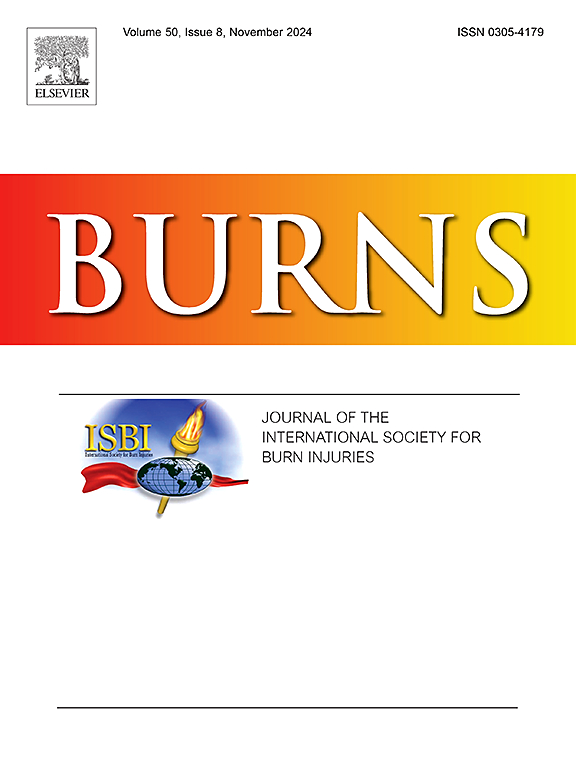在增生性瘢痕成纤维细胞中,LINC00525通过前馈调节TGF-β信号传导促进细胞增殖和胶原表达。
IF 3.2
3区 医学
Q2 CRITICAL CARE MEDICINE
引用次数: 0
摘要
尽管对皮肤瘢痕形成的理解有了进步,但肥厚性瘢痕形成的病因学仍然困扰着研究人员。一些长链非编码rna (lncRNAs)与增生性瘢痕的发病机制有关,但LINC00525在这一过程中的作用和分子机制尚不清楚。本研究表明,LINC00525通过敲低和过表达技术促进细胞增殖和胶原蛋白的表达。进一步的分析,包括核和细胞质定位研究、RNA下拉测定、生物信息学预测和PCR验证,揭示了LINC00525与miR-29a-5p相互作用。下调LINC00525可增强miR-29a-5p的表达,抑制TGF-β/Smad信号通路。另外,TGF-β1诱导LINC00525上调。综上所述,这些发现表明LINC00525通过前馈机制调节增生性瘢痕成纤维细胞中TGF-β信号传导。这项研究为疤痕的预防和治疗提供了新的见解。本文章由计算机程序翻译,如有差异,请以英文原文为准。
LINC00525 promotes cell proliferation and collagen expression through feedforward regulation of TGF-β signaling in hypertrophic scar fibroblasts
The etiology of hypertrophic scar formation continues to elude researchers, despite advancements in the understanding of skin scarring. Several long non-coding RNAs (lncRNAs) have been implicated in the pathogenesis of hypertrophic scars, yet the role and molecular mechanisms of LINC00525 in this process remain unclear. This study demonstrates that LINC00525 enhances cell proliferation and collagen expression through knockdown and overexpression techniques. Further analysis, including nuclear and cytoplasmic localization studies, RNA pull-down assays, bioinformatics predictions, and PCR validation, reveals that LINC00525 interacts with miR-29a-5p. The downregulation of LINC00525 enhances the expression of miR-29a-5p and suppresses the TGF-β/Smad signaling pathway. Additionally, TGF-β1 induces the upregulation of LINC00525. Collectively, these findings indicate that LINC00525 operates through a feedforward mechanism to regulate TGF-β signaling in hypertrophic scar fibroblasts. This research offers novel insights for the prevention and treatment of scars.
求助全文
通过发布文献求助,成功后即可免费获取论文全文。
去求助
来源期刊

Burns
医学-皮肤病学
CiteScore
4.50
自引率
18.50%
发文量
304
审稿时长
72 days
期刊介绍:
Burns aims to foster the exchange of information among all engaged in preventing and treating the effects of burns. The journal focuses on clinical, scientific and social aspects of these injuries and covers the prevention of the injury, the epidemiology of such injuries and all aspects of treatment including development of new techniques and technologies and verification of existing ones. Regular features include clinical and scientific papers, state of the art reviews and descriptions of burn-care in practice.
Topics covered by Burns include: the effects of smoke on man and animals, their tissues and cells; the responses to and treatment of patients and animals with chemical injuries to the skin; the biological and clinical effects of cold injuries; surgical techniques which are, or may be relevant to the treatment of burned patients during the acute or reconstructive phase following injury; well controlled laboratory studies of the effectiveness of anti-microbial agents on infection and new materials on scarring and healing; inflammatory responses to injury, effectiveness of related agents and other compounds used to modify the physiological and cellular responses to the injury; experimental studies of burns and the outcome of burn wound healing; regenerative medicine concerning the skin.
 求助内容:
求助内容: 应助结果提醒方式:
应助结果提醒方式:


